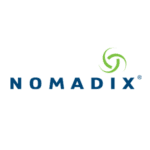 With the peak business travel season in full swing, unfortunately so are reported cases of flu and norovirus, two very contagious viruses. Both present a big problem to restaurants and hotels because the symptoms are frequently blamed on food poisoning.
With the peak business travel season in full swing, unfortunately so are reported cases of flu and norovirus, two very contagious viruses. Both present a big problem to restaurants and hotels because the symptoms are frequently blamed on food poisoning.
Cleveland Clinic defines norovirus as the term for a group of viruses that causes severe vomiting and diarrhea. “It is very common and very easy to spread,” the clinic says. “It can spread through infected people, contaminated food, or contaminated surfaces. While many people call norovirus ‘the stomach flu,’ it has no relation to the flu.”
Like bed bugs, noroviruses are transported into vulnerable businesses by guests whose symptoms have not become full blown. As those guests innocently move about the property, everything and everyone they touch become infected. Within hours, those other people suffer the consequences and simultaneously experience the violent symptoms.

Most norovirus outbreaks occur November to April, according to the Centers for Disease Control. Furthermore, the CDC cites norovirus as the leading cause of inflammation of the stomach and intestines and, on average in the U.S., causes 19 to 21 million cases that cause $2 billion in lost productivity and health-care costs. (see chart)
Any business that serves food needs to be prepared to deal with the unappetizing results of a norovirus outbreak masquerading as a food poisoning.
Scenario: A group is traveling for a business meeting or attending a trade show. Following a banquet, several individuals fall violently ill. After consulting with the meeting planner, the consensus is that the cause must be food poisoning. In the fleeting moments that follow, this alleged case of norovirus becomes “viral” on social media with dozens of posts on Facebook and Instagram, and the restaurant, hotel or caterer is put on notice that it is being held responsible.
What happens next will make the difference between managing a crisis or becoming its victim.
Does your company have a crisis management plan that specially addresses foodborne and other mass illnesses? During a reported outbreak, pulling out the proverbial crisis “three-ring binder” to read the chapter on foodborne illnesses isn’t going “cut the mustard” nor be a very effective solution.
A crisis management plan is critical to every business that serves food and/or houses the public and should include:
- A corporate crisis team with defined roles and authority to deploy timely assistance
- A response team specifically trained to deal with foodborne illnesses including proper reporting procedures to local and national health officials
- Training at all levels
- Routine review of safe food-handling practices
- Preventative cleaning approach to the Norovirus season
- Escalated cleaning protocol at ready if norovirus is detected to ensure swift mitigation
- A recovery team dedicated to managing customer issues and social media
- Crisis management practice drills that include foodborne illnesses
A crisis management plan should be considered a top priority of an organization’s daily operations. It should include tactics for minimizing the disruption of normal business activities. It should address all threats to your organization and should be disseminated widely and updated frequently.
About the author
 David Trumble, a 30-year corporate communications and public relations executive, has served leading hospitality and travel companies including Hilton Worldwide, Doubletree Corporation, Best Western International and Mesa Air Group, the nation’s largest regional airline.
David Trumble, a 30-year corporate communications and public relations executive, has served leading hospitality and travel companies including Hilton Worldwide, Doubletree Corporation, Best Western International and Mesa Air Group, the nation’s largest regional airline.
In his roles as a communications leader, he directed teams responsible for developing and implementing enterprise-level crisis communications plans, protocols, media relations, executive coaching sessions and recovery efforts.
As founder of The Crisis Communications Company, David works with his team of professionals to offer proven strategies for managing and mitigating the impact of crises, from hurricanes and wildfires to lawsuits and security breaches.
Integrated Crisis Management Solutions is composed of security operatives and communications professionals who offer risk assessments, streamlined emergency protocols, management training, customer and employee communication assistance, media relations and recovery programs. For more information, go to www.integratedcrisis.com.






























